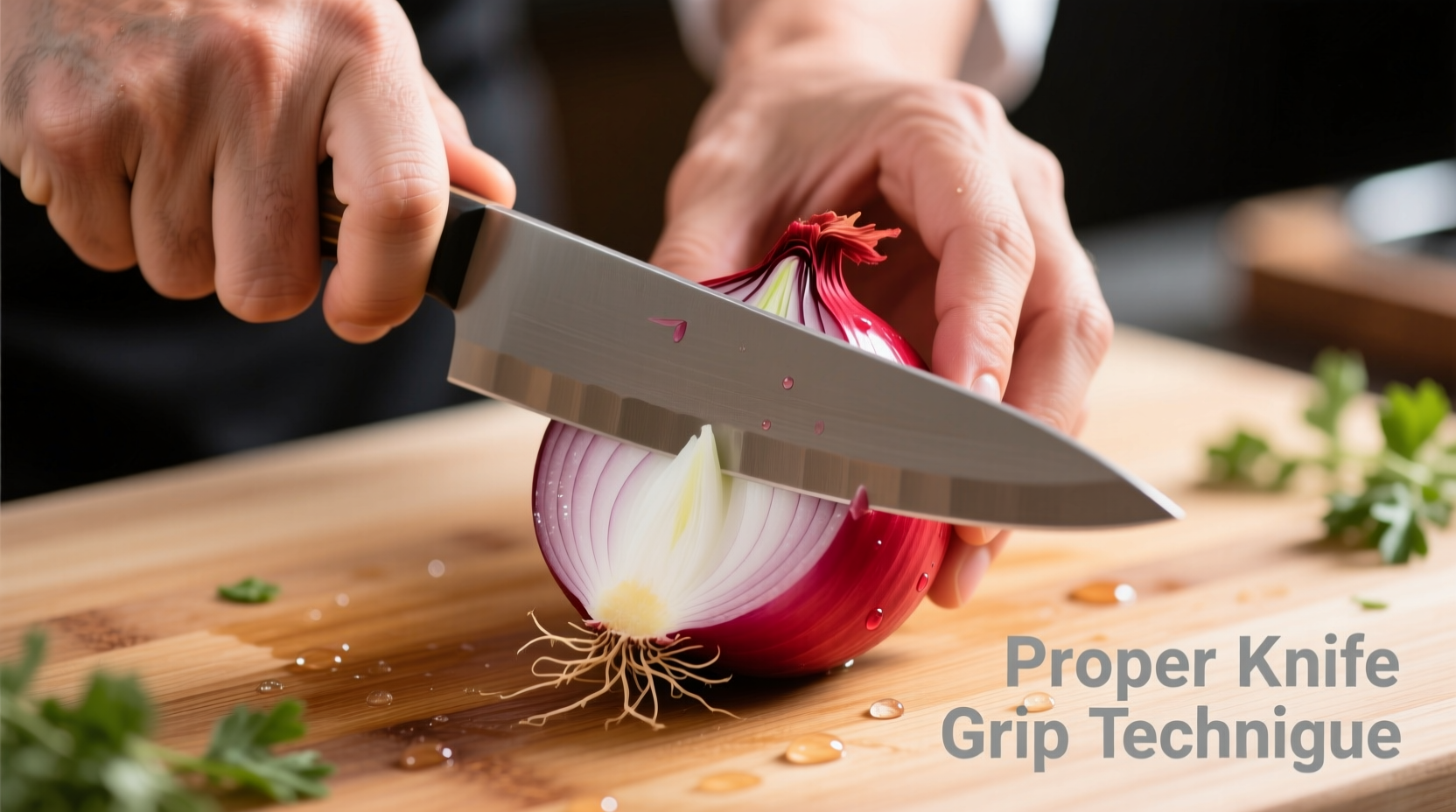The Professional's Guide to Chopping Red Onions Without Tears
Chopping red onions properly transforms your cooking experience. Unlike white or yellow varieties, red onions have a more delicate flavor perfect for raw applications but can be particularly tear-inducing due to their higher water content. Follow this chef-approved method to achieve clean, uniform pieces while keeping your eyes dry.
Why Technique Matters for Red Onions
Red onions contain more water and sulfur compounds than other varieties, making them especially prone to releasing lachrymatory factor (LF) - the chemical that causes eye irritation. According to research from Oregon State University's Food Science Department, proper cutting technique can reduce LF release by up to 60% compared to haphazard chopping.
Essential Tools for Perfect Onion Chopping
- Sharp 8-inch chef's knife - Dull knives crush cells, releasing more irritants
- Stable cutting board - Wood or composite material works best
- Bowl of ice water - For chilling onions before cutting
- Optional: Ventilated safety glasses for extreme sensitivity
Step-by-Step: The 7-Step Red Onion Chopping Method
Step 1: Prepare and Chill
Refrigerate whole red onions for 30 minutes before cutting. The USDA Food Safety and Inspection Service confirms that cold temperatures slow the enzymatic reaction that creates eye-irritating compounds. Never freeze onions as this damages cell structure.
Step 2: Trim the Ends
Place the onion on its side. Using a sharp knife, slice ¼ inch from both the root and stem ends. This creates stable, flat surfaces while removing the most concentrated sulfur compounds found at the ends.
Step 3: Peel Carefully
Remove the papery skin and first translucent layer. Red onions have thinner skins than yellow varieties, so handle gently to avoid wasting edible layers. The deeper purple layers contain the most anthocyanins - powerful antioxidants responsible for red onions' health benefits.

Step 4: Halve Root-to-Stem
Place the onion flat side down. Cut vertically through the root end, keeping root intact to maintain structure during chopping. This differs from white onions where removing the root immediately is acceptable.
Step 5: Make Horizontal Slices
With cut side down, make 2-3 horizontal cuts from stem toward root (without cutting through root). This creates layers that will separate cleanly during dicing. For fine dice, make more frequent cuts.
Step 6: Create Vertical Slices
Make vertical cuts from stem to root, again stopping before the root. The spacing determines your dice size: ¼ inch for fine dice, ½ inch for medium, ¾ inch for coarse.
Step 7: Complete the Dice
Finally, slice perpendicular to previous cuts, moving from stem to root. The intact root holds pieces in place until the final cut, creating uniform cubes with minimal cell damage.
| Onion Cut Type | Best For | Recommended Size |
|---|---|---|
| Finely diced (1/8-1/4") | Salsas, dressings, tartar sauce | ¼ inch for most applications |
| Medium dice (1/4-1/2") | Salads, relishes, pico de gallo | 3/8 inch for optimal texture |
| Coarse chop (1/2"+) | Ceviche, chunky salsas, grilled dishes | ½ inch for structural integrity |
Proven Methods to Prevent Onion Tears
While no method eliminates tears completely, these evidence-based techniques significantly reduce irritation:
- Use a sharp knife - Clean cuts damage fewer cells (Cornell University Food Science)
- Cut under running water - LF compounds dissolve in water
- Work near a vent - Direct airflow carries vapors away from eyes
- Avoid the root end - Highest concentration of LF synthase enzymes
Storing Chopped Red Onions Properly
According to USDA storage guidelines, properly stored chopped red onions maintain quality for 7-10 days. Place in an airtight container with a paper towel to absorb excess moisture. Never store at room temperature - the National Center for Home Food Preservation confirms refrigeration below 40°F (4°C) is essential for food safety.
When to Choose Different Cuts
The size of your red onion dice dramatically affects flavor release and texture:
- Fine dice - Releases maximum flavor quickly, ideal for dressings
- Medium dice - Balanced flavor release, perfect for salads and salsas
- Coarse chop - Maintains texture through cooking, best for grilled dishes
Remember that red onions continue to release flavor after chopping. For raw applications, let chopped onions sit 10 minutes before using to allow flavors to mellow.











 浙公网安备
33010002000092号
浙公网安备
33010002000092号 浙B2-20120091-4
浙B2-20120091-4